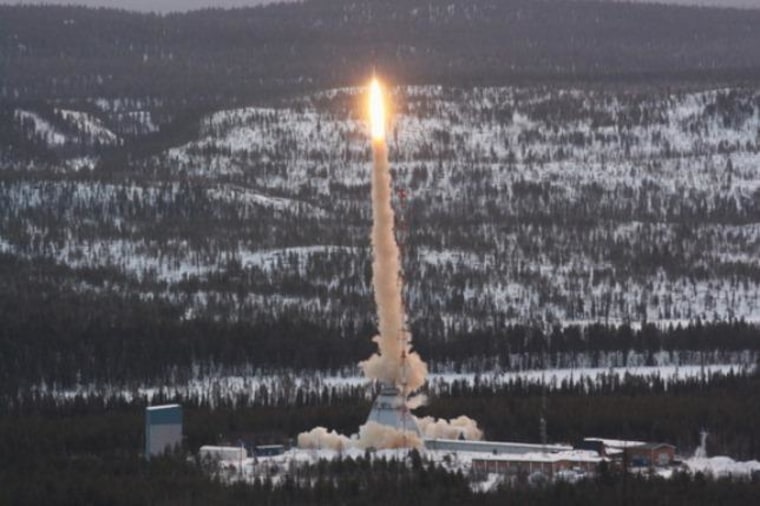The substance that holds the code for life may be able to survive a short ride in space, a new study suggests.
Samples of DNA squirted onto the exterior of a TEXUS-49 sounding rocket remained functional following a 13-minute suborbital spaceflight, the study's scientists report.
"We were totally surprised. ... Our findings made us a little bit worried about the probability of contaminating spacecrafts, landers and landing sites with DNA from Earth," Cora Thiel, a molecular biologist at the University of Zurich and a lead author of the study, said in a statement. [How to Protect Other Planets from Earth Microbes]

Thiel conducted the experiment along with Oliver Ullrich, a biochemist at the University of Zurich as well as the University of Magdeburg in Germany.
Thiel and Ullrich put an experiment inside the payload bay of a TEXUS-49 rocket set for launch from the Esrange Space Center in Kiruna in northern Sweden, to study the effect of weightlessness on DNA and its ability to function.
During flight preparations, Thiel and Ullrich decided to put some DNA on the exterior of the rocket as well: around the outside of the payload, in the grooves of the screw heads, and underneath the payload. When the rocket returned, the researchers found at least a small amount of DNA in all three locations. They said as much as a third of the DNA was still functional.
The DNA used in the experiment was not chromosomal DNA — the kind found in humans and most living organisms — but rather plasmid DNA, which is found in some bacteria and operates slightly differently than chromosomal DNA. Plasmid DNA is around 10 times smaller than bacterial chromosomal DNA, Ullrich said.
"We cannot say how these big chromosomal DNA molecules would react under the same conditions, and this should be investigated in a separate experiment," Ullrich told Space.com in an email. "However, we speculate that small plasmid DNA molecules might be more resistant to re-entry conditions than chromosomal DNA, which is also packed with proteins."
The study was published Wednesday in the journal PLOS ONE.
— Calla Cofield, Space.com
This is a condensed version of a report from Space.com. Read the full report. Follow Calla Cofield on Twitter. Follow Space.com on Twitter, Facebook and Google+.